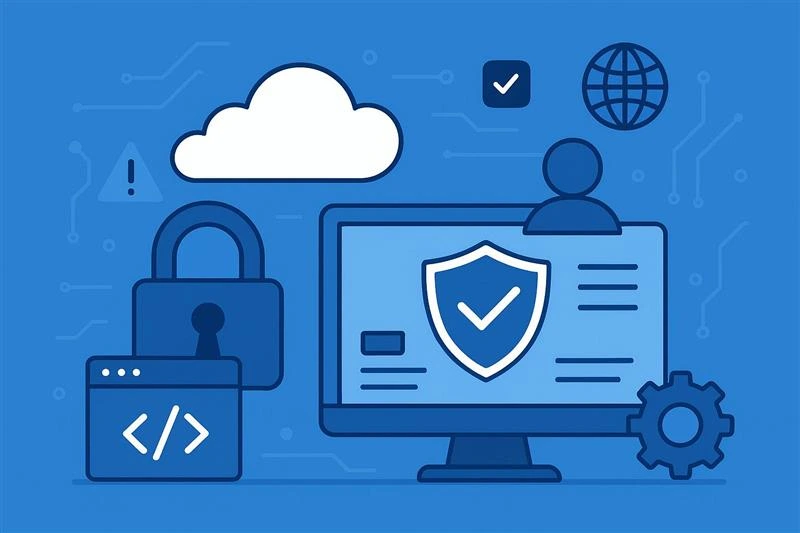AI in Data Governance: Reshaping Enterprise Strategy
15 Jul 2025Why Good Data Matters More Than Ever
In the modern-day online environment, information is what makes any company work. It drives enterprise strategy, informs innovations, and fuels data strategy. However, data is multiplying at a rapid rate, most of which is unstructured, making the management of data a challenge. Mistakes in data quality, security, or violating regulations such as GDPR can be expensive. Data governance takes care of data stored securely and in usable formats, and is usable. However, traditional approaches are not effective in terms of the volume and complexity of data. This is transforming with AI, automation, and the enhancement of data quality with AI and real-time insights, and is redefining organizations in the management of their data in 2025.
What Is Data Governance in Simple Words?
Data governance could be equated to a guideline on how to treat data in a business. It makes data reliable, secure, and accessible to the appropriate people. It addresses the defines who can access, process, and protect data and their storage, and their defense. Good governance preserves the quality of data, ensures compliance with regulations such as GDPR or CCPA, and protects sensitive data. In its absence, companies are exposed to poor decisions due to inaccurate information or legal liabilities, due to mishandling or poor data management. Data increases in 2025, and this makes governance even more important to ensure that everything remains in order and reliable.
How AI Changes the Game
AI is revolutionizing data governance, making the work that used to take hours now take minutes. It examines massive volumes of data in real time, identifies trends, and raises alerts quickly than any team. As an example, AI can sort data, monitor its movement, and ensure real-time data quality. Semi-structured data becomes more usable with technologies such as agentic AI that are autonomous and retrieval-augmented generation (RAG). Another revenue-generating power of AI is the predict trends and automate compliance processes, thus the minimization of errors. This allows data teams to be strategic and more efficient and effective in data strategies within the enterprise.
5 AI-Powered Superpowers for Data Governance
Smart Data Discovery & Cataloging
Issue: Locating and explicating data, particularly unstructured data, is quite difficult and time-consuming.
AI Fix: AI helps find, classify, and arrange the data into a searchable AI data catalog using natural language processing.
Payoff: Teams can locate data efficiently, and there is proper governance even when data is increasing in volume in 2025.
Automatic Data Lineage Tracking
Problem: The Visibility of sources of data and their usage is important to comply, but it is a complex task to do manually.
AI Fix: With AI, we can get automated data lineage, data flows, and relations in real-time.
Payoff: This will make us compliant, identifies and resolves small issues early when they are small, and the quality of the data will be better as it will indicate where problems occur.
Real-Time Quality Checks
Issue: The Low quality of the data makes the decisions turn out to be ineffective, and human controls are not able to track the high volume of data.
AI Fix: Artificial intelligence conducts real-time quality assurance, and it will flag errors, repetitions, or inconsistencies on the fly.
Payoff: With AI, data of good quality would provide credible data that minimizes risks and helps make confident decisions.
Risk & Compliance Alerts
Issue: It is difficult to maintain regulations such as GDPR, and they can impose a penalty in cases of disregard.
AI Fix: Monitors data usage and raise warnings of non-compliant actions or threats.
Payoff: Automation of compliance can prevent fines, guarantee assurance, and force organizations to stay in front of the regulatory policies.
Policy Suggestion & Auto-Enforcement
Issue: Making and implementing data policies is both complicated and subject to human error.
AI Fix: AI proposes policy updates that are guided by rules, and they automatically execute the policy accordingly.
Payoff: This prevents errors, guarantees automation of compliance, and releases teams to conduct strategy work.
Quick 3-Step Roadmap to Adopt AI in Governance
The following are the steps that should be followed in adopting AI in data governance. Since AI is still emerging, it is important to test AI tools safely without complications by using a pilot project, such as data quality or compliance improvement. Second, use your company data to train the AI models to make them fit your purposes, such as cataloging or lineage tracking. Third, roll out the solution enterprise-wide and keep track of the performance and readjust. Such a step-by-step method will result in a seamless shift, significantly reduce risks, and bring maximum returns to your enterprise data strategy in 2025.
Common Roadblocks & Simple Fixes
There are issues in implementing AI in data governance. AI can fail to work with legacy systems more or less, albeit with the help of a middleware or an API. A centralized governance framework is the solution to data silos or data within individual departments. It is normal to have resistance against change; Educate employees on how AI supports their work of AI, such as saving their time, and engage them with the processes. This requires Chief Data Officers (CDOs) or Chief AI Officers (CAIOs), as recent surveys discovered that 84.3% top-level organizations currently have CDOs to lead data strategies.
Conclusion & Next Steps
The use of AI in the data governance area is transforming data management by businesses. It enables smarter choices, competitive enterprise data strategies, and makes some tasks procedurally simpler through automation such as compliance automation and data lineage tracking. AI in data governance improves efficiency, enhances data quality, and ensures compliance, and compliance, thus bringing businesses to a new level and guaranteeing their success in 2025. Whether it is automated data lineage or AI data cataloging, it enables the use of data to make smarter decisions. Are you prepared to change your enterprise data strategy? Explore the Trawlii data-governance toolkit at www.trawlii.com and begin creating a future-ready data framework now.




